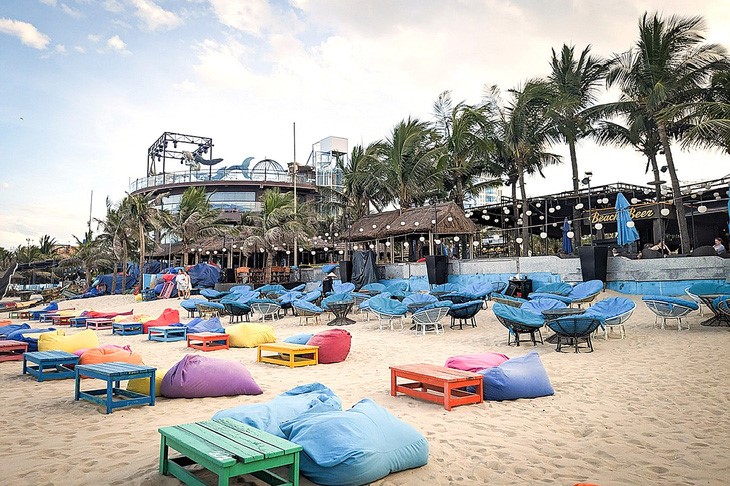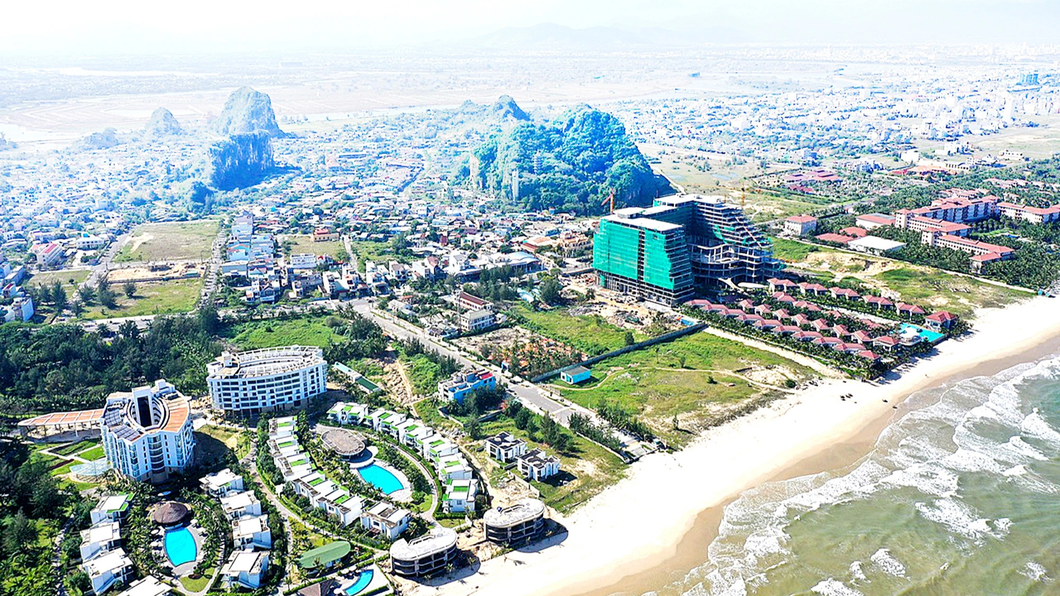A number of tourism enterprises in Da Nang in central Vietnam are grappling with skyrocketing land rents with many of them having to move heaven and earth to borrow loans to pay the rents.
Large coastal tourist sites in Da Nang have reopened after facing the impact of the COVID-19 pandemic for three years.
However, difficulties are still in place as the number of domestic and international tourists remains modest. As a result, the tourism sector has yet to recover to pre-pandemic levels and many tourist destinations are still operating in moderation.
Many enterprises have to shoulder soaring land rents.
Nguyen Manh Trung, general director of Vistar Co. Ltd., the investor of Meliá Da Nang resort, said he was shocked at the escalating land rents.
The company's land rents amount to nearly VND26.5 billion (US$1.1 million) per year in the 2022-26 period, jumping 360 percent over the VND7.3 billion ($306,500) per year in 2017-21 and 1,300 percent against the VND2 billion ($83,965) per year between 2012 and 2016.
The firm has accessed bank loans to pay the land rents, Trung said, adding that this was just a temporary solution as no enterprise can afford such high land rents.
Meliá Da Nang resort earned revenue of VND37 billion ($1.6 million) but was subject to land rents of VND26.5 billion ($1.1 million) in 2022.
“After deducting costs for operation and workers’ salaries, we find it hard to ensure funds for paying taxes. At present, the occupancy rate reaches 50 percent as international travelers have yet to return [to Da Nang].
“We expect the competent agencies to see enterprises’ difficulties and offer support to help them avoid bankruptcy.”
Dozens of other tourism firms in Da Nang have faced the same fate.
For instance, Coral JSC must annually pay VND28.45 billion ($1.2 million) as land rents for a two-hectare water sport tourist site in Phuoc My Ward, Son Tra District in 2020-24, rocketing 948 percent over the VND3 billion ($126,041) in the 2015-19 period.
Similarly, Que Viet JSC saw a surge of over 766 percent in land rents for the 7,000-square-meter Danabeach amusement park and water sport center in My An Ward, Ngu Hanh Son District in the 2021-25 period compared with those in 2016-20, when the company had to pay only VND900 million ($37,812) per year.
Nguyen Anh Minh, a representative of the company, said the firm got a fine of more than VND500 million ($21,000) for late land rent payment in 2022.
Tourism enterprises have to make heavy investments in facilities, while they are facing multiple bottlenecks in business with much lower revenue.
Therefore, they are in dire need of support to survive, Minh said.
The Da Nang Tax Department had earlier coerced the investor of a large resort in Ngu Hanh Son District, Da Nang to pay land rents.
The amount hit VND120.92 billion ($5 million) per year in 2022-26, 344 percent higher than the VND35.13 billion ($1.5 million) in 2017-21.
According to enterprises, land rents were high in Da Nang and are increasing sharply, beyond enterprises’ payment ability.
They have sent complaints to the authorities of Da Nang, suggesting reducing land rents, and stopping blocking their bank accounts and imposing fines for late land rent payments.
They stated that coastal resorts have a large area but the area for construction is small, at 18-30 percent of the land.
The remaining areas accommodate trees and facilities that do not directly help yield profits but enterprises have to still pay land rents for these areas.
The authorities should apply lower land rents for these areas or allow enterprises to increase the area for items serving business purposes.
Enterprises added that spikes in land rents should be in line with the economic situation.
Over the past three years, economic sectors have reported a decline due to the pandemic, so land rents should be revised down.
Without adjustments, many enterprises will be on the brink of bankruptcy, thus resulting in the economic downturn.
In other words, reducing land rents is a way to ensure long-term state budget revenue, they said.
 |
| Coastal resorts in Da Nang are facing multiple difficulties due to surging land rents. Photo: Tan Luc / Tuoi Tre |
Meanwhile, the Da Nang authorities affirmed that the land price frame issued in 2019 was close to the market prices.
The land prices in Da Nang are higher than those in other localities but are not higher than the market prices, so it is hard to revise the prices down.
The city has proposed the Ministry of Natural Resources and Environment levy different rents for land for construction and land for planting trees in a project.
Phan Thi Tuyet Nhung from the Da Nang delegation of National Assembly deputies admitted to Tuoi Tre (Youth) newspaper that the current land rents are much higher than earlier.
She explained that the land price frame was launched in 2019 when the real estate market was thriving.
As a result, land rents from 2020 have been high.
The municipal People’s Council has assigned agencies to study support policies for enterprises, such as employing regulations on extending deadlines to pay land rents in cases of natural disasters and pandemics, the official noted.
Regarding the proposal to reduce land prices, Nhung said land price frames would be promulgated once every five years.
They can be adjusted within 20 percent every year depending on the market conditions.
However, the current land prices are lower than the market prices, so adjustments are likely impossible, according to Nhung.
Like us on Facebook or follow us on Twitter to get the latest news about Vietnam!





















































